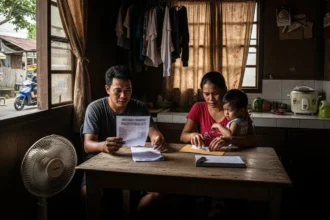Stories are the first bridges between generations. In Filipino households, bedtime is rarely just about sleep – it’s about lessons, imagination, and bonding. From grandparents in rural barangays narrating myths by lamplight to modern parents in condos flipping through illustrated books, bedtime stories remain a cherished part of childhood. They aren’t just tales; they’re cultural heirlooms, carrying values, humor, and warnings across decades.
- 🐦 Ibong Adarna: The Enchanted Bird
- 😴 Juan Tamad: The Lazy Trickster
- 🌲 Maria Makiling: Guardian of Mount Makiling
- 🪙 Ang Alamat ng Pinya (The Legend of the Pineapple)
- 🦅 Ang Alamat ng Agila (The Legend of the Eagle)
- 📜 Florante at Laura
- 👹 Aswang Stories
- 🌿 Malakas at Maganda: The First Filipinos
- 🌈 Ang Alamat ng Bahaghari (The Legend of the Rainbow)
- 🦸 Darna and Local Superhero Folktales
- 📚 Table: Top 10 Filipino Bedtime Stories and Core Lessons
- Frequently Asked Questions about Filipino Bedtime Stories
- ✨ Keeping Our Stories Alive
- 📚 References
Even in an age of YouTube and Netflix, many parents still prefer passing down these old narratives. Why? Because they’re not just entertaining. They instill moral lessons, spark curiosity about Philippine history and folklore, and strengthen identity. Let’s revisit the top 10 Filipino bedtime stories that continue to live in our homes – tales that shaped us as kids and still shape our children today.
🐦 Ibong Adarna: The Enchanted Bird

The story follows the three princes of Berbanya who embark on a quest to capture the bird to cure their ailing father, King Fernando. Along the way, they encounter betrayal, jealousy, and trials of endurance. Each time the bird sings its seven magical songs, it changes colors in dazzling succession – a detail parents often dramatize when telling the story, making children imagine the bird glowing in shades of gold, green, blue, and violet.
What makes Ibong Adarna more than just fantasy is its moral depth. Parents use it to teach about:
- Patience and perseverance: Only the youngest prince, Don Juan, succeeds because he endures hardships with humility.
- The dangers of envy and betrayal: The elder brothers’ jealousy reminds children that greed destroys trust.
- Resilience in adversity: No matter how many times Don Juan is tricked or hurt, he continues on his mission.
Today, Filipino families still retell Ibong Adarna at bedtime because it is both a magical story and a moral compass. Kids drift to sleep imagining the bird’s rainbow feathers, while parents know the lesson lingers long after the story ends.
😴 Juan Tamad: The Lazy Trickster

The most famous tale is of Juan lying under a guava tree, too lazy to climb and pick the ripe fruit. Instead, he waits for it to fall into his mouth – only for birds to snatch it away first. In another story, his mother asks him to buy food, but instead of carrying it in a basket, he drags it along the road until everything is spoiled. Children love these tales because Juan’s antics are funny, but the humor always hides a warning.
Parents usually end the story with a playful scolding: “Don’t be like Juan Tamad – if you’re lazy, you’ll end up with nothing.” But modern retellings sometimes add nuance. Was Juan a fool? Or was he a clever satire of people who wait for blessings instead of working for them? Some even see him as a symbol of resilience – surviving through wit, humor, and trickery despite poverty.
Still, for bedtime storytelling, Juan Tamad is most often the comic relief of Filipino folklore. He makes kids laugh before sleep, while parents get to sneak in a timeless lesson: opportunities don’t fall into your lap – you have to work for them.
🌲 Maria Makiling: Guardian of Mount Makiling

According to legend, Maria was a stunningly beautiful maiden who often appeared to locals, helping farmers with abundant harvests and guiding hunters through the forest. Her generosity made her a symbol of kindness and protection. Parents often describe her as a woman cloaked in flowing hair and mist, drifting gracefully through the mountain’s slopes.
But the heart of her tale lies in betrayal and loss. In most versions, Maria falls in love with a mortal man – sometimes a farmer, sometimes a warrior – only to be abandoned or deceived. In anger or sorrow, she withdraws her blessings, and the once-bountiful fields grow barren. Since then, townsfolk believe Maria roams the mountain alone, her heart broken but her spirit ever watchful.
Bedtime retellings often emphasize two lessons:
- Respect for nature: Maria punishes those who exploit the forest and rewards those who care for it, making her story an early ecological reminder.
- The cost of greed and betrayal: Just as the townsfolk lost her blessings, children are reminded that selfishness can drive away even the most loving guardians.
Some parents also frame her story as a romantic mystery, telling children that Maria still waits on the mountain, her silhouette appearing at dusk or dawn, cloaked in fog. Others highlight her compassion, portraying her not as a vengeful spirit but as a protective mother figure of the land.
In every version, Maria Makiling remains a timeless figure – part enchantress, part guardian, and part teacher. Her legend turns a simple bedtime story into a poetic call for love, honesty, and harmony with the natural world.
🪙 Ang Alamat ng Pinya (The Legend of the Pineapple)

The story begins with a young girl, often named Pina, who was known for her laziness. She refused to help her mother with household chores and constantly complained whenever asked to find things. Frustrated by her daughter’s attitude, her mother once wished aloud: “If only you had many eyes so you could find things yourself!” The wish came true in the most unusual way – the girl mysteriously disappeared, and in her place grew a pineapple, its surface covered with countless “eyes.”
For Filipino parents, this tale is more than entertainment – it’s a gentle cautionary lesson. It teaches children that laziness has real consequences, and that disobedience and selfishness eventually come back to harm you. At the same time, it offers a dose of humor. Kids often giggle imagining a spoiled child turning into a spiky fruit, making the story both amusing and unforgettable.
What makes the legend especially powerful is its lasting symbolism. Every time children see or eat a pineapple, they are instantly reminded of Pina’s fate. This transforms the bedtime story into a daily moral lesson woven into Filipino life.
Some parents also use the tale to highlight gratitude and responsibility. They emphasize that chores and tasks are not punishments, but opportunities to learn discipline and contribute to the family. Others frame it as a story of cause and effect, showing kids that our choices shape our destiny.
Ultimately, the Legend of the Pineapple endures because it is simple, funny, and deeply tied to Filipino culture. It’s not just a bedtime story – it’s a parable you can taste at the table.
🦅 Ang Alamat ng Agila (The Legend of the Eagle)
In the mountains and rural towns of the Philippines, elders still tell the story of how the Philippine eagle, the country’s national bird, came to be. Depending on the version, the mighty agila was once a brave warrior who sacrificed himself to protect his people or a cursed soul transformed into a bird of unmatched strength.
What makes this bedtime story captivating is how it mixes fantasy with patriotism. For children, it paints the image of a majestic bird soaring high above forests and rivers, watching over the land like a guardian. For parents, it is a chance to teach values: courage, sacrifice, and love of country.
Some versions emphasize the eagle’s role as a protector of nature, reminding kids that forests and wildlife must be respected. Others highlight the bird as a symbol of freedom and strength, encouraging children to face challenges with bravery, just like the legendary warrior who became the eagle.
Parents also use this tale as a way to connect bedtime storytelling with Filipino identity and pride. The eagle is not just any bird – it is endemic to the Philippines, rare and powerful, and thus a symbol of what it means to be truly unique.
With its blend of myth, moral lesson, and national symbolism, the Alamat ng Agila remains one of the most inspiring Filipino bedtime legends, sparking children’s imagination while grounding them in values that last a lifetime.
📜 Florante at Laura
Though originally a literary masterpiece by Francisco Balagtas, Florante at Laura has also found its way into the realm of bedtime storytelling. Parents often simplify its epic verses into shorter, dramatic tales, focusing on Florante’s struggles in the dark forest, his unwavering love for Laura, and the lessons of betrayal and loyalty.
For children, the appeal lies not in its complex allegories but in the classic drama of good versus evil. The images of a young hero tied to a tree, betrayed by supposed friends, and saved by unexpected allies create suspense that captures a child’s imagination.
Bedtime retellings usually highlight:
- Bravery – Florante’s ability to endure hardship and face enemies.
- Friendship – The loyalty of characters who stand by him despite danger.
- Love’s Triumph – The idea that true love, like that of Florante and Laura, can endure trials and betrayal.
Some parents also use the story to introduce children to Philippine literature, showing that even centuries-old works hold timeless lessons. In this way, Florante at Laura becomes more than a school requirement – it becomes a living bedtime narrative, passed down like folk tales.
By weaving Balagtas’ classic into children’s imaginations, Filipino parents remind the young that courage, loyalty, and love remain relevant values, no matter the generation.
👹 Aswang Stories
Almost every Filipino child has grown up with chilling tales of the aswang – the shapeshifting creatures of Philippine folklore. These stories are usually told at night, making them both a source of fear and fascination. For many parents and grandparents, aswang tales serve as more than just scary bedtime entertainment; they are warnings in disguise, teaching kids not to wander outside after dark, not to talk to strangers, and to respect household rules.
Parents often narrate different versions depending on the age of the child. Some soften the fear factor, turning the aswang into a comical figure who gets easily outwitted by clever villagers. Others lean into the suspense, keeping the spookiness intact to make kids huddle close under their blankets.
What makes aswang stories so enduring is their dual purpose:
- Cultural preservation – keeping alive a uniquely Filipino folklore passed down for generations.
- Practical caution – reminding children about safety, obedience, and the importance of staying close to home.
For children, these tales spark imagination and adrenaline. For adults, they carry echoes of community survival, superstition, and rural life lessons. Whether spooky or silly, aswang stories remain a staple of Filipino childhood, a reminder that bedtime in the Philippines often comes with both comfort and a little thrill.
🌿 Malakas at Maganda: The First Filipinos
Among the most iconic Philippine creation myths is the story of Malakas (Strong) and Maganda (Beautiful) – the first man and woman. Emerging from a split bamboo stalk, they are said to be the ancestors of the Filipino people. Their names symbolize the traits that Filipinos continue to value: strength, resilience, and beauty of spirit.
Parents retell this tale not just as bedtime fantasy but as a way to anchor children to their heritage. The image of humans springing from bamboo connects kids with nature and highlights the Philippines’ deep respect for the land. For children, it sparks wonder – how could people come from bamboo? For adults, it’s a reminder that Filipinos are born from the earth itself, tied to the environment and community.
The story also carries deeper cultural meanings:
- Unity of Man and Woman – emphasizing balance and harmony in relationships.
- Resilience in Origin – symbolizing how Filipinos, like bamboo, can bend but never break.
- Cultural Identity – showing that being Filipino is rooted in both nature and myth.
Whether told as a simple bedtime tale or as a reflection on national identity, Malakas and Maganda remain timeless figures, reminding every generation of where we came from and what values we carry.
🌈 Ang Alamat ng Bahaghari (The Legend of the Rainbow)
In Filipino folklore, the bahaghari is more than just a natural phenomenon – it is often seen as a bridge between the heavens and the earth. Stories vary across regions, but a common thread is that of lovers separated by divine will, reunited only through the arc of the rainbow. Some versions say the rainbow is the gods’ way of showing mercy, allowing the lovers to meet in colors instead of flesh.
At bedtime, parents simplify the tale into something magical and comforting: “After the rain, the rainbow appears to remind us that love, hope, and joy always return.” For children, the rainbow sparks endless imagination – its seven colors become symbols of magic, wonder, and promise.
Beyond the fantasy, the story also carries gentle life lessons:
- Hope after hardship – storms always pass, and beauty follows.
- Unity in diversity – just like the rainbow’s many colors, harmony comes from differences.
- Love that endures – even when separated, true bonds remain unbroken.
For parents, it’s also a chance to talk about resilience – how life may bring storms, but every difficulty will eventually give way to light. The bahaghari thus becomes both a bedtime wonder and a cultural reminder that the Filipino spirit is colorful, hopeful, and unyielding.
🦸 Darna and Local Superhero Folktales
Though more modern compared to age-old myths, Darna and other Filipino superheroes like Panday and Lastikman have firmly entered the realm of bedtime storytelling. Parents weave them into the same fabric as legends and epics, passing them down not just as entertainment but as models of bravery, justice, and selflessness.
Children are captivated by the iconic moment when Narda swallows the magic stone and shouts “Darna!”, transforming from an ordinary barrio girl into a superheroine. It sparks their imagination and reassures them that even the most ordinary Filipino can rise to greatness through courage and integrity.
Beyond Darna, other heroes hold a special place:
- Panday, the blacksmith who forges a magical sword, symbolizes resilience and the fight against tyranny.
- Lastikman, with his humorous elasticity, teaches kids about resourcefulness and using gifts for good.
- Captain Barbell, an ordinary man who becomes strong through a mystical barbell, reflects the power of humility and responsibility.
At bedtime, these tales often mix laughter, action, and moral grounding. Parents use them to inspire children to believe that true heroism lies not in superpowers, but in the values of kindness, courage, and sacrifice. For many Filipino families, Darna and her fellow superheroes have become modern myths – a bridge between tradition and contemporary culture, reminding kids that heroes can come from their own land, language, and everyday struggles.
📚 Table: Top 10 Filipino Bedtime Stories and Core Lessons
| Story | Core Lesson |
|---|---|
| Ibong Adarna | Patience, perseverance, sibling rivalry |
| Juan Tamad | Laziness leads to downfall |
| Maria Makiling | Respect nature, avoid greed |
| Alamat ng Pinya | Obedience and helpfulness |
| Alamat ng Agila | Courage and sacrifice |
| Florante at Laura | Bravery, loyalty, love |
| Aswang Tales | Caution, discipline |
| Malakas at Maganda | Strength, beauty, heritage |
| Alamat ng Bahaghari | Hope and love |
| Darna & Folk Heroes | Courage, justice |
Frequently Asked Questions about Filipino Bedtime Stories
- Why do Filipino parents still tell bedtime stories instead of just using tablets or phones?
Because bedtime stories do more than just lull kids to sleep-they pass down values, culture, and imagination. Kids get stories full of myth, lesson, magic, and local flavor that connect them to their heritage in ways a screen often can’t. - Which Filipino bedtime story is most popular today?
“Ibong Adarna” and “Alamat ng Pinya” often top the list. They tend to stick around because their lessons are simple, memorable, and easy to tell without losing the magic. - Aren’t some of the stories, like “aswang tales”, too scary for kids?
They can be, but many parents adapt! They tone down the scary parts, make them more humorous, or leave out the more intense details. It’s all about age-appropriate storytelling. - Do bedtime stories help with a child’s education or language skills?
Definitely. Listening to stories builds vocabulary, gives kids a feel for narrative structure (beginning, conflict, resolution), and sparks curiosity about history, folklore, and culture. It also helps with listening skills and imagination. - Are these bedtime tales still relevant in 2025?
Yes. Even as gadgets and streaming get more common, many parents believe there’s something timeless about oral tales-something a digital show can’t replace. These stories still touch on values like bravery, kindness, respect, and identity. - How can parents make storytelling more engaging for kids?
Use voices, gestures, and props. Add sound effects. Let kids ask questions or imagine scenes. Even small things like pausing for effect, dimmed lighting, or having them help act out parts can make the story come alive. - Do different regions in the Philippines tell the stories differently?
Totally. Folktales like Maria Makiling or “Alamat ng Bahaghari” often have regional variations-names might change, details shift, some versions are longer or shorter. These differences are part of what makes Filipino folklore rich. - Can bedtime stories pass down important lessons besides just “don’t misbehave”?
Absolutely. Many stories teach lessons like perseverance (“Ibong Adarna”), respect for nature (Maria Makiling), courage (Alamat ng Agila, Darna), or hope after hardship (Alamat ng Bahaghari). They often combine fun, fantasy, and pretty deep morals. - Do parents prefer telling stories out loud, or do they use books and videos more now?
Both are used. Some parents stick with oral storytelling-especially in provinces or families who grew up with that tradition. Others supplement or use illustrated books or online video versions to help with visuals and interest. - What’s a simple way for busy parents to keep the tradition alive?
Even telling just a short legend or folk tale once or twice a week helps. Pick stories that don’t take too long. Encourage kids to tell parts back or imagine their own ending. It doesn’t have to be perfect-what matters is the bonding and passing down of tradition.
✨ Keeping Our Stories Alive
These Filipino bedtime stories aren’t just tales for children – they are cultural DNA, reminders of who we are and where we came from. By telling them, parents don’t just help their kids fall asleep; they pass on values, heritage, and imagination. In a digital era, choosing to keep these stories alive is an act of resistance against forgetting.
So tonight, when you tuck in your child, consider skipping the gadget screen. Instead, share a story – about birds that heal, pineapples with eyes, or heroes who rise from bamboo. The magic of bedtime stories lies not just in the tale, but in the bond it creates between parent and child, generation after generation.
📚 References
-
PinoyKidsRead – Top 10 Filipino Children’s Books (2025)
-
The Asian Parent PH – 10 Tagalog Bedtime Stories na Makukuhanan ng Aral
-
Fairytalez – Philippine Fairy Tales, Folktales, and Fables
-
Friends Peace Teams – Filipino Story Collection (2025)
-
Project Gutenberg – Philippine Folk Tales (Classic Text)
-
The Learning Basket – Rediscovering Philippine Folk Tales & Legends










